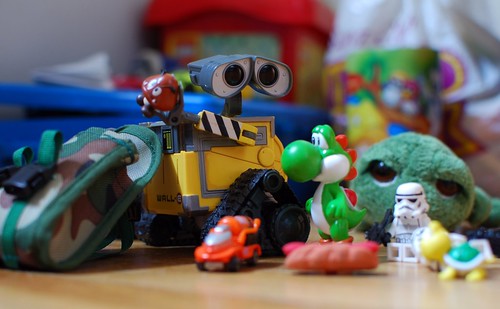Being a parent is a fun, difficult, important, crazy, all-consuming
job. There are so many things we need to teach our children to make them
productive members of society. And one of the most important things we can teach
children when they are young is how to share. In school, work, and even
personal relationships, it is important to know how to share. So, how do you
teach your young child how to share?
Practice Sharing
Image via Flickr by moppet65535
Practice makes perfect. We’ve all heard this saying many
times. When teaching a child to share, it’s important to practice sharing.
Whether showing your child how to share with a sibling, with yourself, or with
friends, the more they are shown how to share, the more likely they are to do
it themselves. Another good way to practice sharing is to simply play by taking
turns. Build a tower together – your child puts down a block, then you put the
next one. With this exercise you are helping your child learn valuable lessons
– sharing, patience, and working together to achieve a goal.
Limit Punishments
Image via Flickr by ankakay
When teaching a child something new, it can be tempting to
be stern with them when they aren’t complying. However, when teaching sharing,
it is crucial to limit punishments and stern actions. Sharing is not something
that can be forced. Many children will have trouble sharing their toys with
others, and may even have certain items they refuse to share. This is normal,
and the child will learn that sharing is more fun than playing alone. However,
scolding and punishments in this area may lead to resentment and selfishness.
Get Excited
Image via Flickr by sheggy
You want your child to be excited about playing well with
others, right? If so, you need to make sure you get excited, as well. Praise
your child when they share. Tell them how great they are doing when they let
another child, or even yourself, play with their toys. Even when your child
only shows another person their toy, it is important to encourage this
behavior. Children grow with praise. They are more likely to do the behavior, in
this case – share, when they know they are doing something good.
Be Realistic
Image via Flickr by meddygarnet
Are you expecting your one year old to willingly share all
of their toys? This could be unrealistic. In fact, most professionals agree
that true sharing doesn’t start happening until about 2 ½. While it is
important to start teaching your child to share before this, it is not a good
idea to expect true sharing at a very young age. Realistic expectations on when
your child should have good sharing skills can keep you sane and your child
happy.
Image via Flickr by juliocrockett
How often do you share? When teaching a child anything,
especially a habit like sharing, you need to make sure you do it, as well. When
playing with your child, give them the toy you have. As you do this, explain you
are sharing the toy. Even things like sharing a cooking dish with a friend or lending
the lawn mower to the neighbor are a great times to show your child how
important it is to share.
Sharing. It is something that, as adults, we may not think
about very often. However, as parents, it is something that is constantly on
our minds. Teaching our children to share will help them grow. It is a long and
sometimes very frustrating process. However, as with most things that have to
do with parenting, it is worth it in the end.








